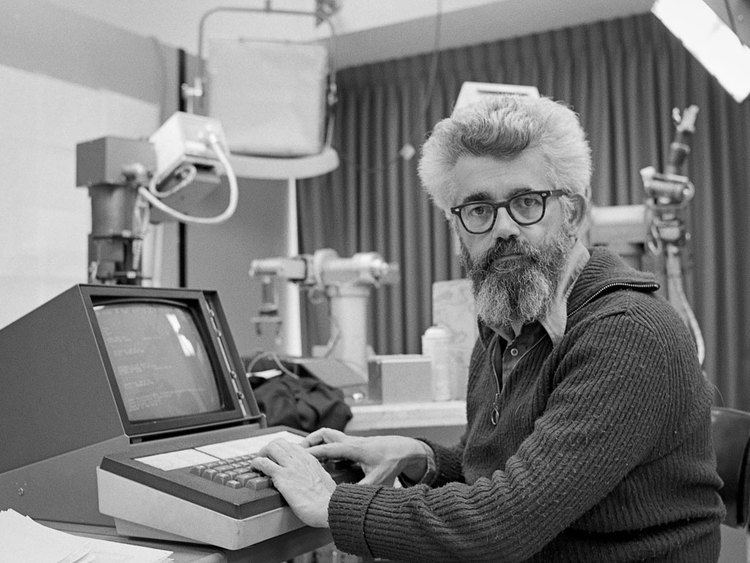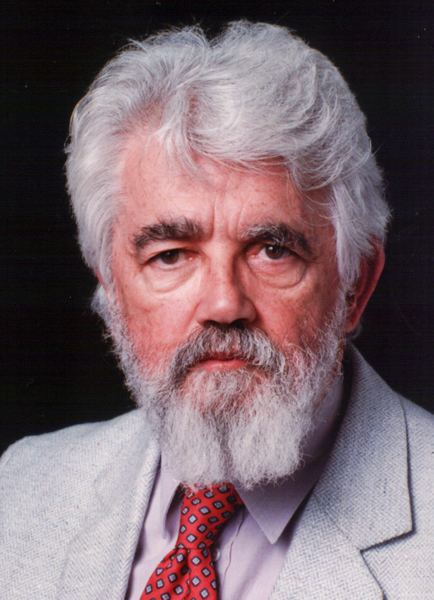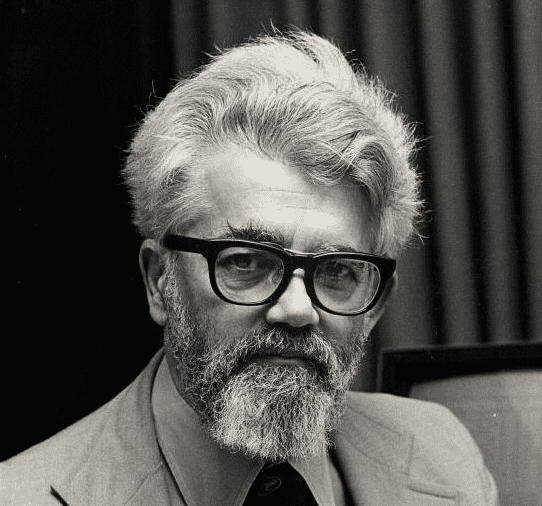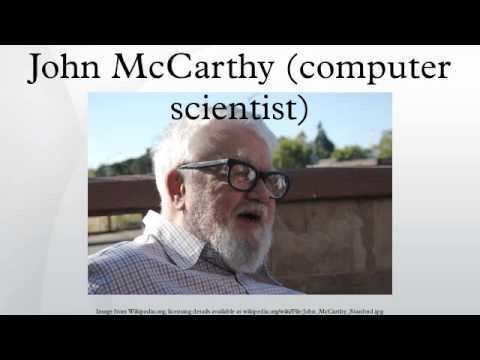Nationality American Role Computer scientist Name John McCarthy | Fields Computer technology | |
 | ||
Born September 4, 1927Boston, Massachusetts, U.S. ( 1927-09-04 ) Institutions Doctoral students Ruzena BajcsyRandall DavisCordell GreenRamanathan V. GuhaBarbara LiskovRobert MooreFrancis MorrisRaj ReddyDonald KaplanEyal AmirAarati Parmar Martino Books Formalizing common sense Parents Ida Glatt McCarthy, John Patrick McCarthy Similar People John Backus, Claude Shannon, Alan Perlis, Edward Feigenbaum, Peter Naur | ||
Doctoral advisor Solomon Lefschetz Residence United States of America | ||
John mccarthy computer scientist
John McCarthy (September 4, 1927 – October 24, 2011) was an American computer scientist and cognitive scientist. McCarthy was one of the founders of the discipline of artificial intelligence. He coined the term "artificial intelligence" (AI), developed the Lisp programming language family, significantly influenced the design of the ALGOL programming language, popularized timesharing, and was very influential in the early development of AI.
Contents
- John mccarthy computer scientist
- John mccarthy 1927 2011 artificial intelligence complete thinking allowed jeffrey mishlove
- Early life and education
- Academic career
- Contributions in computer science
- Other activities
- Personal life
- Philosophy of artificial intelligence
- Awards and honors
- Major publications
- References

McCarthy received many accolades and honors, such as the Turing Award for his contributions to the topic of AI, the United States National Medal of Science, and the Kyoto Prize.

John mccarthy 1927 2011 artificial intelligence complete thinking allowed jeffrey mishlove
Early life and education

John McCarthy was born in Boston, Massachusetts on September 4, 1927 to an Irish immigrant father and a Lithuanian Jewish immigrant mother, John Patrick and Ida Glatt McCarthy. The family was obliged to relocate frequently during the Great Depression, until McCarthy's father found work as an organizer for the Amalgamated Clothing Workers in Los Angeles, California. His father came from the fishing village of Cromane in County Kerry, Ireland. His mother died in 1957.

McCarthy was exceptionally intelligent, and graduated from Belmont High School two years early. McCarthy was accepted into Caltech in 1944.

McCarthy showed an early aptitude for mathematics; during his teens he taught himself college mathematics by studying the textbooks used at the nearby California Institute of Technology (Caltech). As a result, he was able to skip the first two years of mathematics at Caltech. McCarthy was suspended from Caltech for failure to attend physical education courses; he then served in the US Army and was readmitted, receiving a B.S. in Mathematics in 1948.

It was at Caltech that he attended a lecture by John von Neumann that inspired his future endeavors.

McCarthy initially did graduate studies at Caltech, but moved to Princeton University. He received a Ph.D. in Mathematics from Princeton University in 1951 as a student of Solomon Lefschetz.
Academic career
After short-term appointments at Princeton and Stanford University, McCarthy became an assistant professor at Dartmouth in 1955.
A year later, McCarthy moved to MIT as a research fellow in the autumn of 1956.
In 1962, McCarthy became a full professor at Stanford, where he remained until his retirement in 2000. By the end of his early days at MIT he was already affectionately referred to as "Uncle John" by his students.
McCarthy championed mathematical logic for artificial intelligence.
Contributions in computer science
John McCarthy is one of the "founding fathers" of artificial intelligence, together with Marvin Minsky, Allen Newell and Herbert A. Simon. McCarthy coined the term "artificial intelligence" in 1955, and organized the famous Dartmouth Conference in Summer 1956. This conference started AI as a field. (Marvin Minsky later joined McCarthy at MIT in 1959.)
In 1958, he proposed the advice taker, which inspired later work on question-answering and logic programming.
John McCarthy invented Lisp in the late 1950s. Based on the lambda calculus, Lisp soon became the programming language of choice for AI applications after its publication in 1960.
In 1958, McCarthy served on an ACM Ad hoc Committee on Languages that became part of the committee that designed ALGOL 60. In August 1959 he proposed the use of recursion and conditional expressions, which became part of ALGOL.
Around 1959, he invented so-called "garbage collection" methods to solve problems in Lisp.
He helped to motivate the creation of Project MAC at MIT when he worked there.
At Stanford University, he helped establish the Stanford AI Laboratory, for many years a friendly rival to Project MAC.
In 1961, he was perhaps the first to suggest publicly the idea of utility computing, in a speech given to celebrate MIT's centennial: that computer time-sharing technology might result in a future in which computing power and even specific applications could be sold through the utility business model (like water or electricity). This idea of a computer or information utility was very popular during the late 1960s, but faded by the mid-1990s. However, since 2000, the idea has resurfaced in new forms (see application service provider, grid computing, and cloud computing).
In 1966, McCarthy and his team at Stanford wrote a computer program used to play a series of chess games with counterparts in the Soviet Union; McCarthy's team lost two games and drew two games (see Kotok-McCarthy).
From 1978 to 1986, McCarthy developed the circumscription method of non-monotonic reasoning.
McCarthy is also credited with developing an early form of time-sharing. His colleague Lester Earnest told the Los Angeles Times: "The Internet would not have happened nearly as soon as it did except for the fact that John initiated the development of time-sharing systems. We keep inventing new names for time-sharing. It came to be called servers.... Now we call it cloud computing. That is still just time-sharing. John started it."
In 1982 he seems to have originated the idea of the "space fountain", a type of tower extending into space and kept vertical by the outward force of a stream of pellets propelled from Earth along a sort of conveyor belt which returns the pellets to Earth (payloads would ride the conveyor belt upward).
Other activities
McCarthy often commented on world affairs on the Usenet forums. Some of his ideas can be found in his sustainability Web page, which is "aimed at showing that human material progress is desirable and sustainable". McCarthy was a serious book reader, an optimist, and a staunch supporter of free speech. His best Usenet interaction is visible in rec.arts.books archives. And John actively attended SF Bay Area dinners in Palo Alto of r.a.b. readers called rab-fests. John went on to defend free speech criticism involving European ethnic jokes at Stanford.
McCarthy saw the importance of mathematics and mathematics education. His Usenet .sig for years was, "He who refuses to do arithmetic is doomed to talk nonsense"; his license plate cover read, similarly, "Do the arithmetic or be doomed to talk nonsense." He advised 30 PhD graduates.
His 2001 short story "The Robot and the Baby" farcically explored the question of whether robots should have (or simulate having) emotions, and anticipated aspects of Internet culture and social networking that became more prominent during the ensuing decade.
Personal life
McCarthy was married three times. His second wife was Vera Watson, a programmer and mountaineer who died in 1978 attempting to scale Annapurna I as part of an all-women expedition organised by Arlene Blum. He later married Carolyn Talcott, a computer scientist at Stanford and later SRI International.
McCarthy considered himself an atheist. Raised as a Communist, he became a conservative Republican after a two day visit to Czechoslovakia in 1968 after the Soviet invasion. McCarthy died at his home in Stanford on October 24, 2011.
Philosophy of artificial intelligence
In 1979 McCarthy wrote an article entitled "Ascribing Mental Qualities to Machines." In it he wrote, "Machines as simple as thermostats can be said to have beliefs, and having beliefs seems to be a characteristic of most machines capable of problem solving performance." In 1980 the philosopher John Searle responded with his famous Chinese Room Argument, disagreeing with McCarthy and taking the stance that machines can not have beliefs simply because they are not conscious (he says that machines lack 'intentionality', a term commonly used in the philosophy of mind). A vast amount of literature has been written in support of one side or the other.
